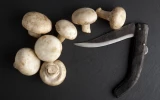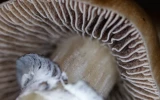Ideal Growing Conditions for Shiitake (Temperature, Humidity)
Although growing shiitake mushrooms requires some specialized skills and strategies, cultivators still grow them because they are a favorite culinary ingredient. If you’re vying to grow shiitake mushrooms, you must know the ideal temperature and humidity level to grow them. In this article, you'll find information about the ideal growing conditions for shiitake mushrooms.
Shiitake mushrooms grown on logs fruit at temperatures between 41°F and 86°F. Shiitake spawns grown on sawdust blocks require an incubation temperature of 60°F to 75°F, a temperature of 53°F to 64°F with 90% relative humidity for pinning, and temperatures between 45°F and 65°F with humidity of 65–85% to encourage fruiting.
Shiitake mushrooms have various strains that have specific fruiting temperature requirements. Aside from temperature and humidity, there are other conditions that must be met to successfully grow these mushrooms. Keep reading to find out more about these growing conditions.
Summary
- The ideal temperature for growing shiitake mushrooms on logs is 41°F to 86°F.
- The ideal temperature for growing shiitake mushrooms on sawdust blocks as substrate depends on the stage of their growth.
- A humidity level of 90% is needed during pinning, but it can be lowered to 65–85% during the fruiting stage.
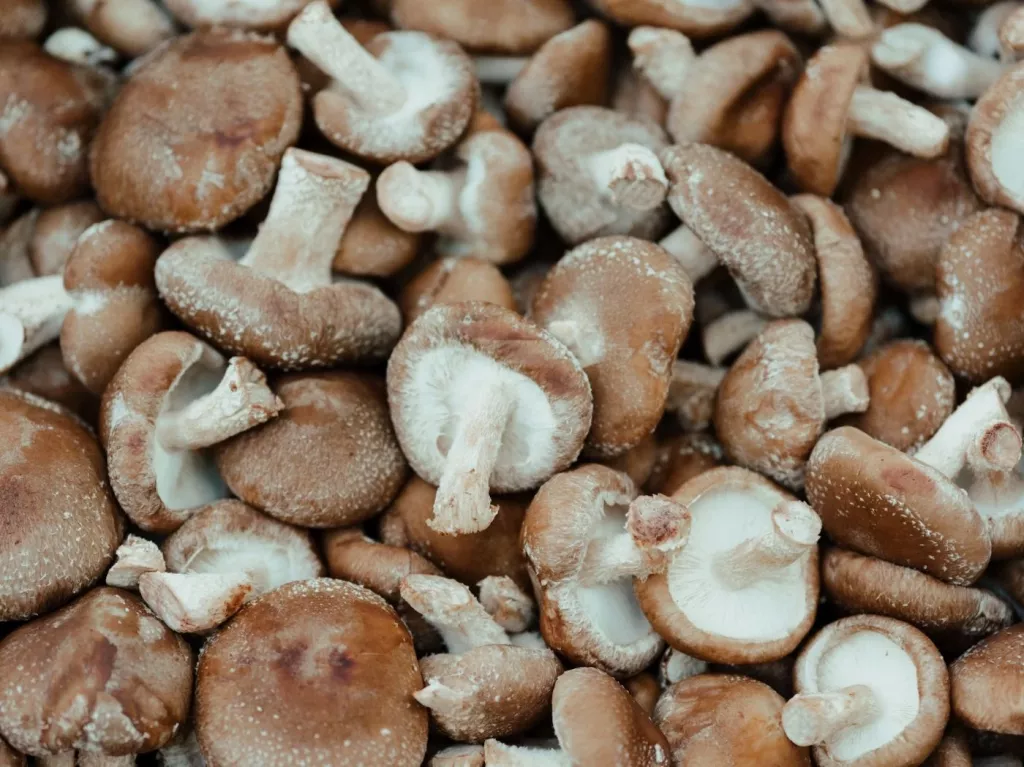
On this page:
Optimal Temperature and Humidity Levels for Growing Shiitake Mushrooms
Several shiitake strains have different fruiting temperature requirements. Below are the optimal temperature ranges for each type of shiitake mushroom grown in different areas.
-
When grown on tree logs, shiitake will generally produce edible mushrooms at log temperatures between 41°F and 86°F (5 °C – 30 °C).
-
Cool season, some strains of shiitake mushrooms produce fruit at 41°F to 68°F. Wide range strains fruit between 50°F and 80°F, while warm season strains develop edible mushrooms between 50°F and 86°F.
-
Shiitake mushrooms grown on sawdust blocks require different temperature requirements with each stage of growth. But generally, they prefer cool temperatures between 45°F and 70°F (7°C and 21°C).
-
When you choose to grow your shiitake mushrooms on sawdust bags, the shiitake spawn must be pre-incubated for 3 weeks under a temperature setting of 60°F to 75°F (16°C to 24°C), even without considering humidity levels since the polybag keeps the substrate from drying.
-
To promote pinning or primordia formation, lower the temperature to between 53°F and 64°F (12°C and 18°C). This is to avoid a slowdown in their growth if the temperature is too cold and substandard mushroom quality if the temperature is too hot. The relative humidity at this stage must be above 90% to get the best results. Shiitake blocks like it wet during pinning or primordia formation.
-
To reach maturity and produce fruiting bodies (the edible mushrooms), the block must be placed in an environment with a temperature range of 45°F to 65°F (7°C to 18°C) and humidity levels maintained around 65–85% relative humidity.
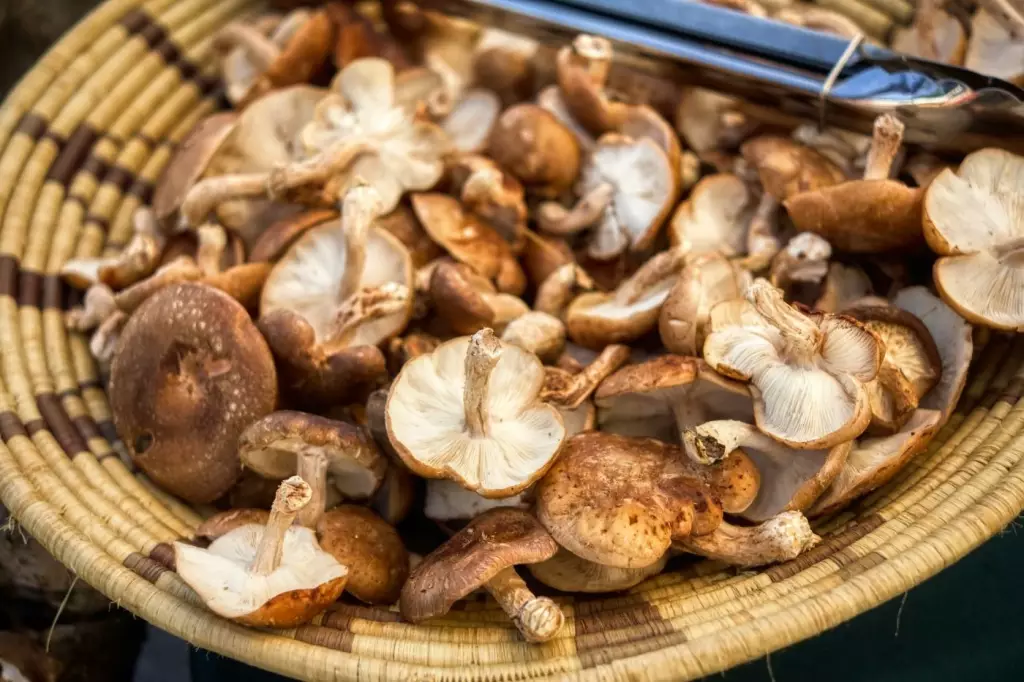
If you made it past the easy-to-grow oyster mushrooms and are looking for a more challenging mushroom to farm, you can try growing shiitake mushrooms. These mushrooms are more challenging to grow than oyster mushrooms because of their less aggressive mycelium, which needs a long incubation period.
Growing shiitake mushrooms is an extremely good investment. Its high market demand is attributed to the health benefits that these mushrooms have, which are thought to keep the heart healthy. They’re jam-packed with vitamins and minerals and have low sodium and calorie levels.
Since shiitake mushrooms are prolific flush producers, the costs of farming them are therefore worth it. They can produce 3 to 5 flushes of fresh mushrooms every 5 weeks for 4 to 6 years if ideal growing conditions are met.
The first requirement for growing shiitake mushrooms, like any other mushroom, is a substrate. This will serve as the growing medium where the mushrooms will establish themselves and get the nutrients they need to produce. Shiitake mushrooms prefer to grow on a wood-based growing medium such as logs or blocks of sawdust.
Other Ideal Growing Requirements for Shiitake Mushroom Farming

Temperature and humidity aren’t the only growing requirements when raising shiitake mushrooms. A few steps and other factors also affect their growth, which is important to take note of to grow these mushrooms successfully.
When you have completed the incubation period for shiitake spawns, this is where the birthing stage happens. The birthing stage is the first step before the fruiting phase of Shiitake mushrooms.
In this stage, the block is taken out of the plastic wrap or poly bag and then transferred to the fruiting room or chamber. At this point, you can help your shiitake mushrooms adjust by doing the following techniques:
-
Cold Shock: Subject the block to a rapid drop in temperature to signal the start of the fruit-bearing phase. This can be done by refrigerating the shiitake blocks overnight before unwrapping them fully.
-
Thumping: Shiitake requires literal thumping by lightly whacking it with your palm to stimulate the start of fruiting. Be careful, however, not to deform or crack the block.
-
Water blasting: Hose down your shiitake block to initiate fruiting season. You can do this by directly blasting the block with an excellent strong hose, but be careful not to use too much water pressure.
These methods can help the shiitake block start fruiting and adjust well to the new environment.
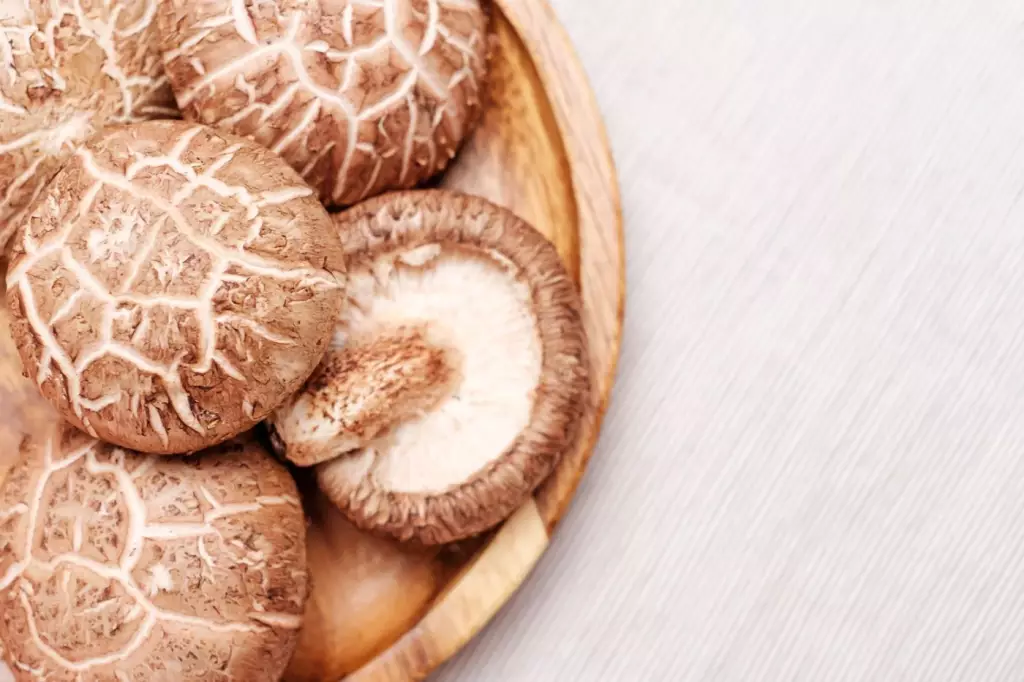
Now, since we’ve known that to induce primordia formation, a temperature of 50°F to 65°F, or more ideally, a temperature range of 53°F to 64°F (12°C to 18°C), and a relative humidity of above 90% are needed to encourage pinning, we must also know that this stage requires sufficient light and air exchange.
Contrary to the belief that mushrooms grow best in dark places, they do actually need a bit of light. They grow best in rays that fall on the blue spectrum. You can use blue light, fluorescent light, or just natural light situated at least 15 ft. away from the block.
Aside from light, shiitake mushrooms require fresh air. Like humans, they consume oxygen (O2) and produce CO2. If there is too much CO2, they won't ripen.
To avoid this, you must ensure that there’s room for fresh air exchange in the shiitake block. To be sure, open the top of the bag a little to allow for increased ventilation, which helps to encourage fruiting and, at the same time, minimize drying.
Ideally, the air needs to be circulated and replenished 5-8 times per hour. For this reason, you must keep the bag on the substrate block as much as possible, to minimize the drying and maintain slightly elevated carbon dioxide levels.
A lot of air movement might dry your block completely and may sweep away too much of the carbon dioxide produced by the growing mycelium, so better be on the watch.

